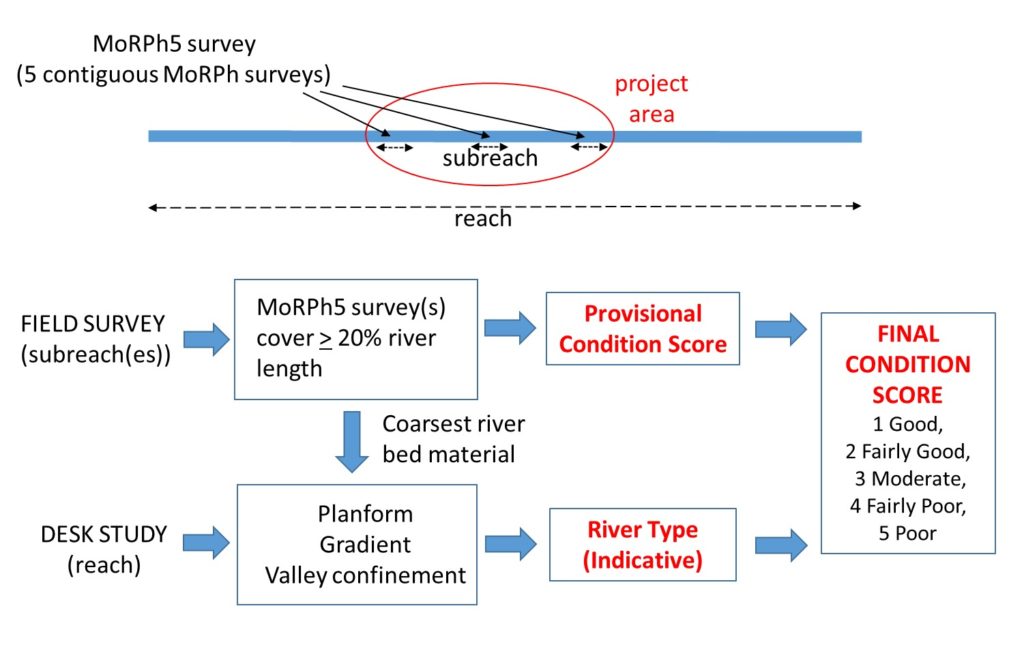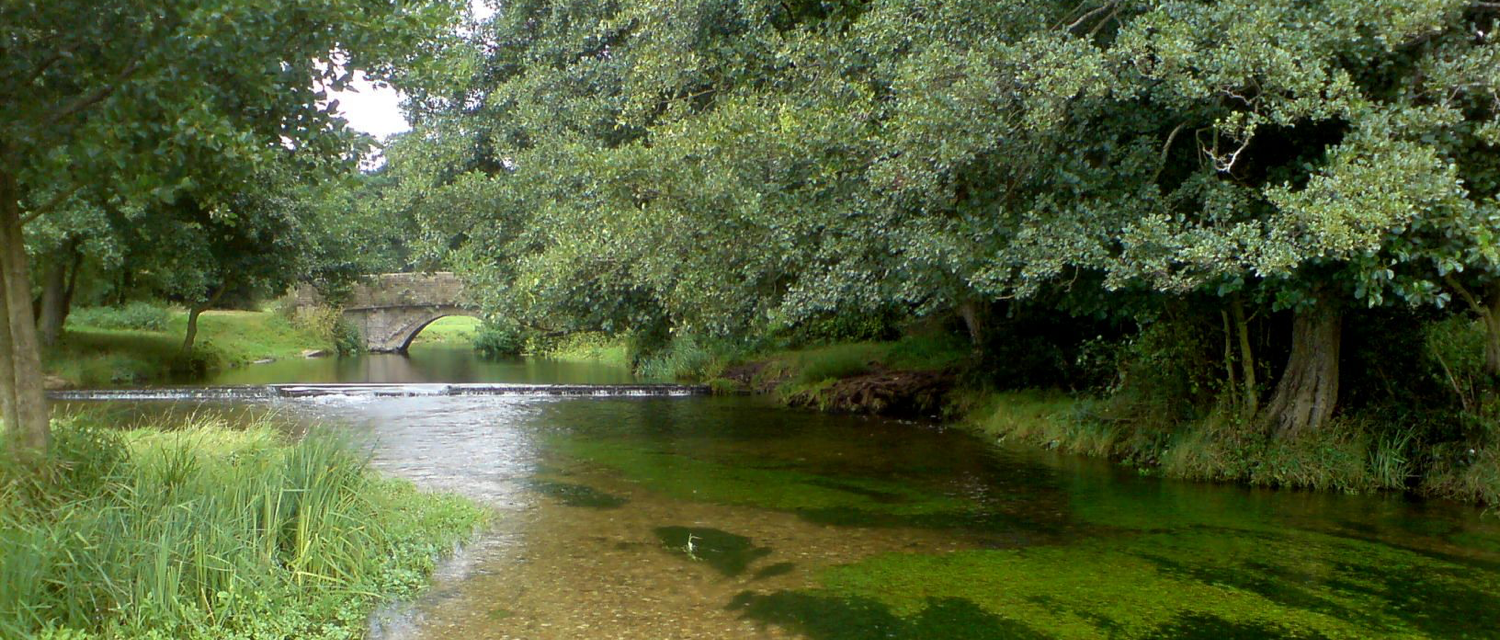The MoRPh Rivers field survey was originally designed as an accessible science-based standard method for use by citizen scientists and non-profit organizations. It now forms one component of a suite of tools developed for assessing the condition of rivers, streams and canals as part of the Watercourse Unit Module within The Statutory Biodiversity Metric and the calculation of Biodiversity Net Gain.
While MoRPh Citizen Science training provides a valuable approach for volunteers and researchers to gather evidence and build understanding of changes in the physical habitats of rivers and streams. It uses a basic set of 14 MoRPh module indicators, and all approved Citizen Science data are shared via the open source MoRPh Citizen Science Map and also available to Catchment Partnerships via the Catchment Based Approach CaBA Data Hub.
Our MoRPh Professional and River Condition Assessment (RCA) training combines the user-friendly MoRPh field survey with a geomorphological River Type desk study to generate and help interpret a detailed set of 37 MoRPh Pro indicators and raw data, securely saved in a private workspace. The River Condition Assessment standard method and training provides environmental professionals with the foundation knowledge plus software tools to enable a baseline assessment of River Condition together with scenario modelling for forecasting target condition, as needed for Biodiversity Metric assessment and Biodiversity Net Gain reporting. The RCA method can also be used for other types of baseline and post-intervention investigations or forecasts e.g. river improvement opportunity mapping, river restoration or natural flood management (NFM) baseline and post project appraisals or monitoring .
River Condition Assessment Tools
The figure below outlines the structure of the standard River Condition Assessment methodology. The individual components are discussed below:

1. MoRPh Field Survey
A basic MoRPh Rivers field survey that characterises the local physical structure of a river channel and its margins. The MoRPh field survey is typically conducted over a river length of 10 to 50 m.
2. MoRPh5
A sequence of 5 adjacent or contiguous MoRPh field surveys (typically 50 to 250 m in length) that draws upon the recorded field data to calculate over 30 indicators that contribute to a preliminary condition score for the MoRPh5 subreach to provide an indicative value for longer lengths displaying consistent character and condition.
3. River Type Survey
A desk-based reach-scale (1 to 5 km) study identifies the hydro-geomorphological river type for the length of river being assessed. The determined River Type translates the preliminary condition score for each MoRPh5 subreach into a final river condition class, which reflects the baseline and together with wider contextual information and professional knowledge, helps to inform what is achievable for that river type.

